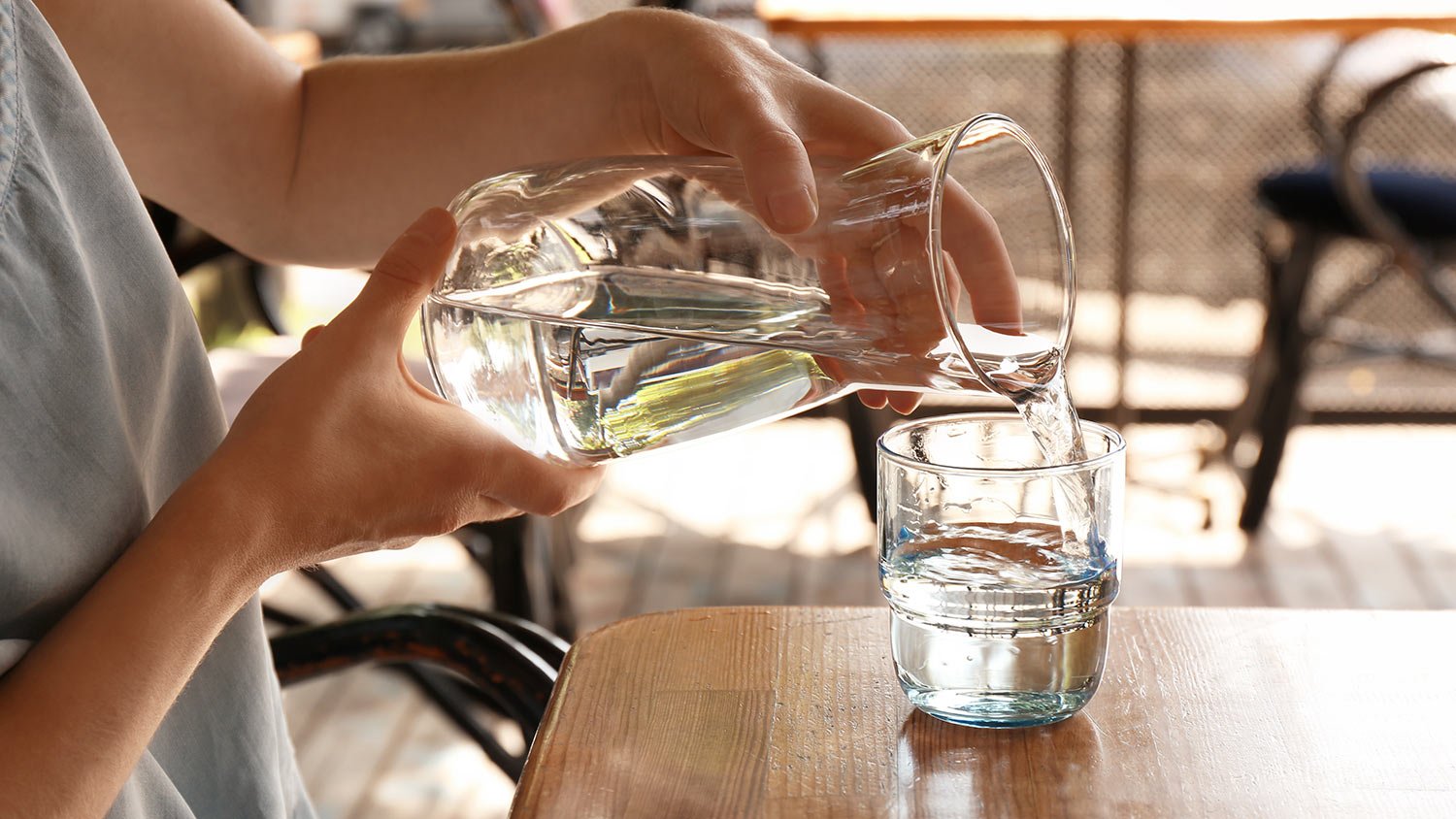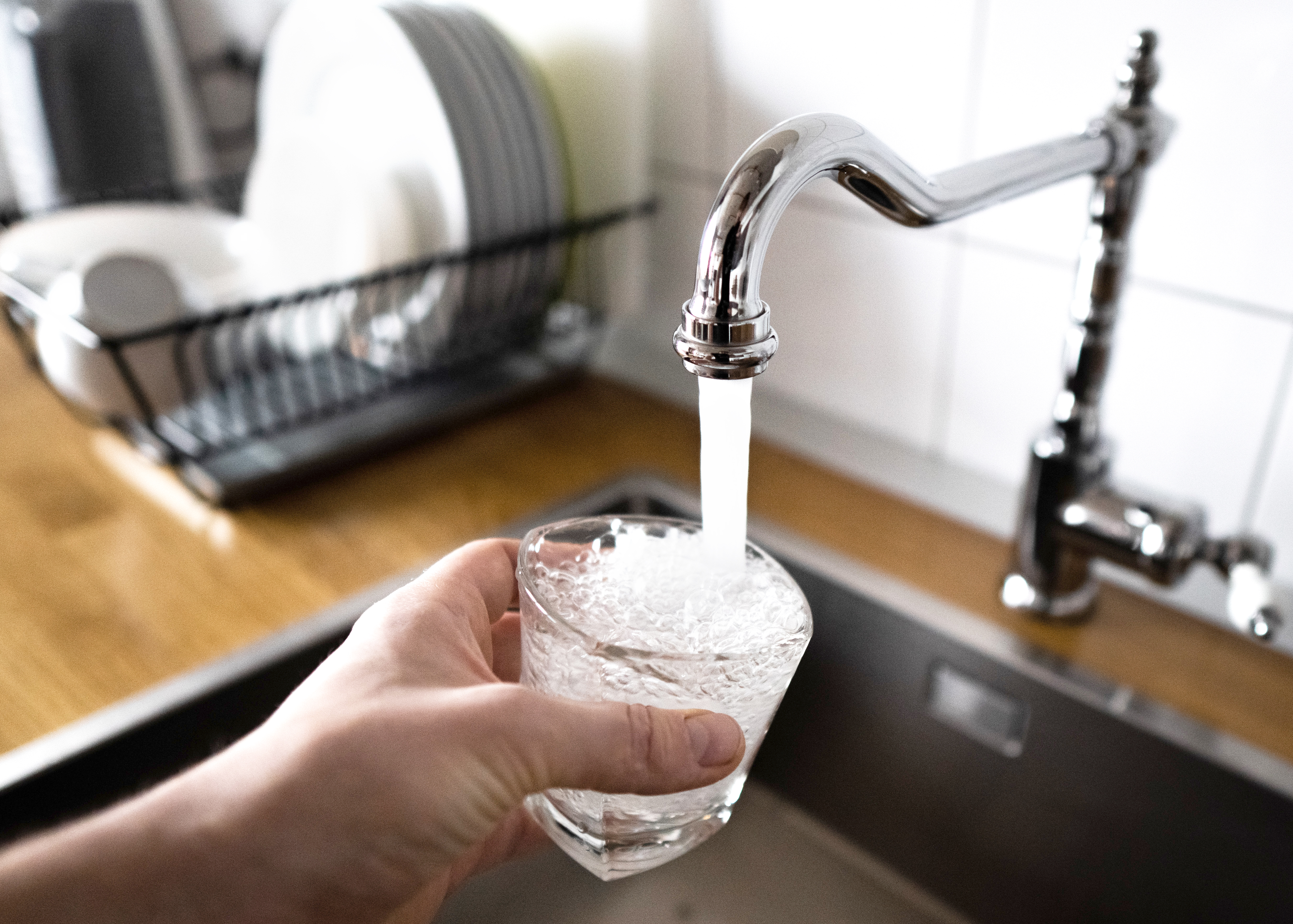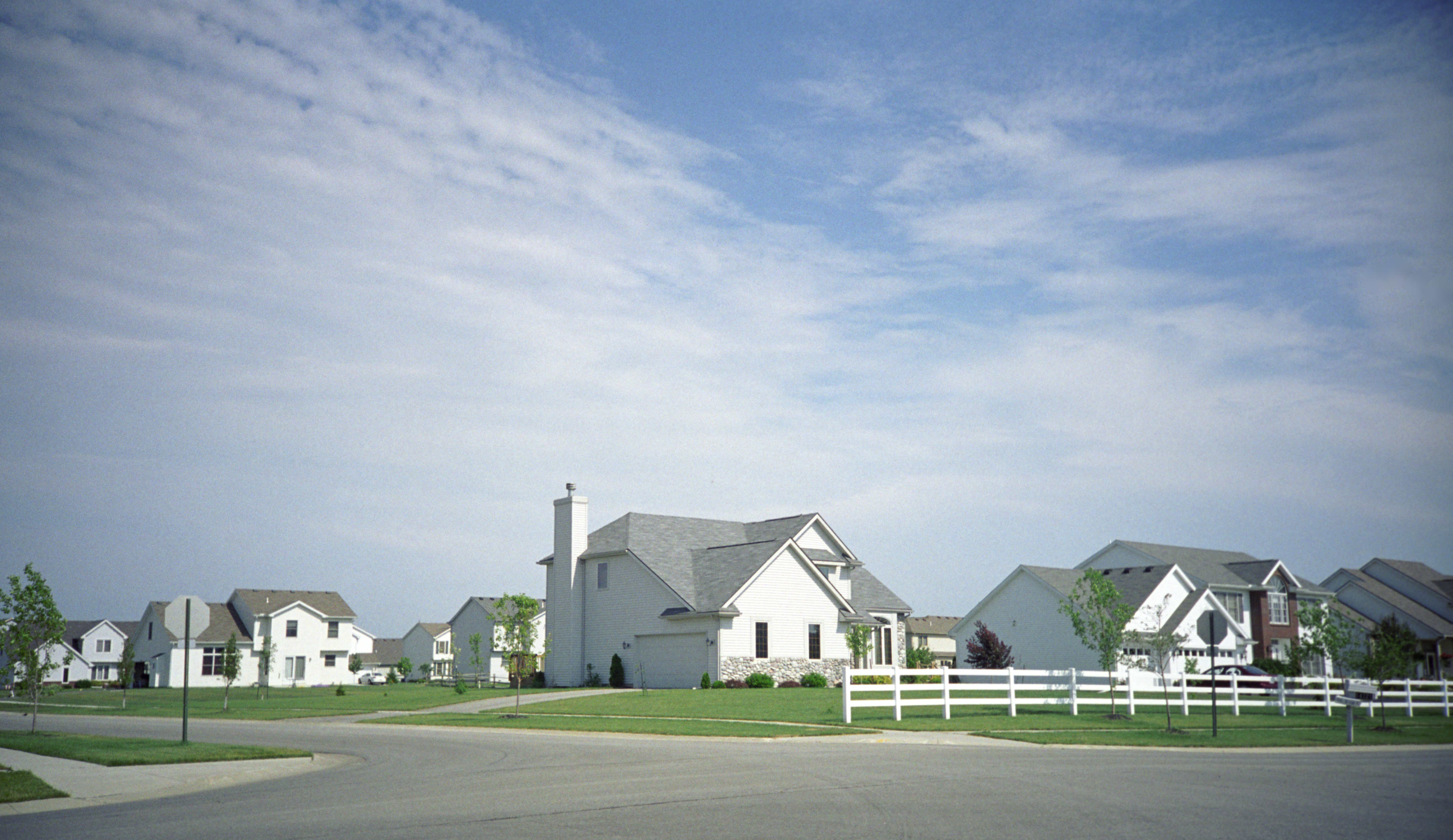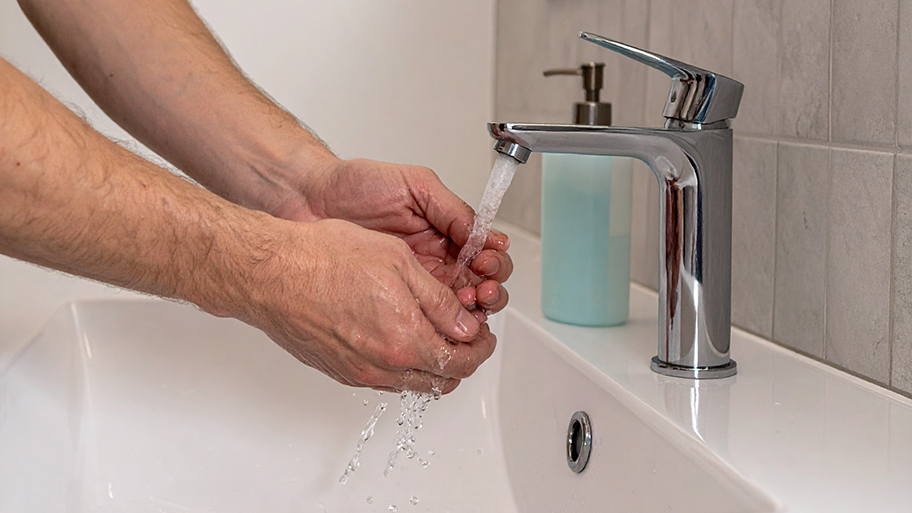
Learn how much plumbers cost in Columbus, Ohio. Discover pricing for faucet repairs, pipe work, and emergency services, plus how you can save money.
PEX may leach contaminants into your water, so most people stick to copper supply lines


PEX is lighter and more affordable than traditional copper, and it’s less likely to leak.
Most research suggests that PEX isn’t ideal for drinking water.
Filtering water from PEX lines makes it safe for consumption.
Most homeowners stick to other pipe options for water supply lines, like copper.
As more people turn to PEX piping for its affordability and ease of use, asking if PEX is safe for drinking water is important. Unfortunately, it’s unclear whether PEX tubing may negatively affect water quality, and most research suggests that it’s not the ideal material to deliver drinking water. We’ll discuss its safety and some alternative materials in this guide.
PEX piping is a cross-linked polyethylene piping commonly used in home plumbing systems for heating, cooling, and water systems. In some instances, it’s also used to insulate electrical cables and wires. You can identify PEX pipes by the trademark red and blue colors most commonly found inside your home’s walls.
This type of piping is the least expensive among plastic pipes, costing between $0.50 and $2.00 per foot, depending on the thickness. Compare that to the most expensive metal—copper pipe—at $2 to $8 per foot, and it’s easy to see why PEX has risen in popularity. Because it requires less energy to produce than metal pipes, it's become more common in homes and green building construction.
Researchers are examining the extent of PEX pipes’ impact on water quality, testing various brands of plastic pipes. Since there is so little research data on these pipes’ safety, some contractors hesitate to use PEX piping for water supply lines to taps until they know more about its long-term impact. Most are comfortable using PEX to run to appliances and fixtures that don’t deliver drinking water, including the following:
Bathroom sinks
Showers and tubs
Hose bibs
Washing machines
Dishwashers
From what is known, preliminary findings show different PEX brands affect water quality differently, and even pipes that pass safety tests may contain enough contaminants to affect water’s taste and smell. In fact, there are over 70 PEX pipe brands on the market, and studies showed that some of those PEX pipes have over 150 contaminants.
One of the most recent studies conducted in 2021 and published by Science Direct tested water from eight different types of PEX pipe brands. They found that 62 chemicals leached into the water, with half of those organic compounds leached considered toxicological—basically, toxic—but not carcinogenic, or cancer-causing.
In other words, chemicals might get leached through your PEX pipes, and these chemicals may be toxic to some extent. However, while PEX pipes may not be entirely safe, these findings are still not definitive; studies did not account for factors like the types of fittings used to secure the piping, disinfection byproducts, and any synergistic effects.
A few problems you might experience with your PEX pipes include the following:
Drinking water odors, such as that of gasoline, might prompt you to avoid your water altogether
Decreased water quality from toxic chemicals and contaminants leaching into your water
Some leached chemicals may encourage bacteria growth in the pipes
Exposed PEX pipes that are vulnerable to UV rays and damage from cold climates and must be kept indoors, underground, or in the walls of your home
Toluene, a solvent used for plastic resin synthesis, often causes odors that reach a detectable level. The level of solvent, however, does not exceed health standards. So, while the gasoline-smelling water may cause homeowners to wrinkle their noses, it’s generally safe to use.
That doesn’t mean all of the leached chemicals are safe for consumption, though. If you’re concerned about water quality, you can always call a water specialist near you to come test your water.

PEX piping is still relatively new in the United States. Contractors began installing it about 35 years ago, with California last to approve its use; according to California State Pipe Trades Council, it wasn’t until 2018 that California completed its review on the safety of PEX piping.
The state still has concerns regarding the safety of PEX pipes and has implemented provisions to protect residents from potential issues. Until researchers have definitive answers, California urges homeowners with existing PEX piping to filter drinking water from the tap to ensure no issues with the quality of water coming from PEX water pipes.
It’s worth noting that you’ll need a standalone type of water filtration system, like a filtration pitcher or a filter that connects to your faucet. A whole-home water filtration system will only treat the water before it reaches the PEX, which can still leave you with unwanted chemicals. You might also want a whole-home filter to avoid hard water stains on your dishes or soap scum build-up in showers and tubs.
In addition, you might want to consider flushing your piping system regularly. This is because any contamination that may occur builds up as water stays stagnant in the piping. Even a three-day vacation without using your taps can cause a chemical build-up in the water.
When installing PEX piping as part of new construction, some states (such as California) mandate that contractors must flush the pipe system for at least two minutes, let the system stand for no less than one week, and then flush the system long enough to empty the contained volume of water.
If you’re concerned about existing PEX pipes in your home and want to replace them, or if you’ve changed your mind about purchasing PEX pipes, there are a handful of alternatives. Let’s look at the most common types of materials used for household plumbing and why they may or not be a good fit for you.
| Pipe Material | Pros | Cons |
|---|---|---|
| PEX | Affordable (between $0.50–$2.00 per foot), flexible and easy to install, and lightweight | May leach chemicals into your drinking water, some pipes contain over 150 contaminants, and can affect water taste and odor |
| Copper | Time-tested reliability (75+ years), durable, and a traditional option | High cost (between $2–$8 per foot) Prone to corrosion with hard water and less sustainable for cold climates |
| PVC | Long lifespan (50–70 years), can be used outdoors (with coating), and recyclable | Can’t handle temperatures over 140 degrees Fahrenheit, prone to cracking during freezing temperatures, and not suitable for hot water |
| CPVC | Tolerates temperatures up to 200 degrees, suitable for hot water lines, and long lifespan (50–75 years) | High cost, can become brittle over time, and prone to cracking and bursting |
| HDPE | Extremely durable (lasts 50–100 years), safe for drinking water, and resistant to corrosion | Sensitive to stress cracking and flammable under certain conditions |
Copper pipes have withstood the test of time for over 75 years, but this doesn’t mean that they’re the best alternative to PEX piping. For one, you’ll need to replace them more frequently, especially if you have hard water. PEX piping can expand during cold weather, making it more suitable for very cold climates, and it won’t corrode in response to minerals in the water like copper will. Copper is also much more expensive, as mentioned previously, costing about six times as much as PEX piping per linear foot.
Some installers have more experience and trust in installing traditional copper piping, so even barring the concern with water contamination, they’ll resort to copper because they’re more familiar with it and trust its durability. Some may still shy away from copper, though, if they test for hard water and determine that the material won’t last long due to corrosion.
This option can also withstand UV rays and may be more appropriate for hotter climates where the sun might pose a threat to piping, and freezing is rare. Overall, PEX pipes are more sustainable, affordable, and long-lasting, while copper pipes are more prone to corrosion and small leaks that are more costly to replace.
Consider the advantages and disadvantages of PEX versus copper piping when installing or replacing pipes in your home. Your local plumber can also help you identify the best pipe materials for your plumbing system.
Another alternative to PEX pipes and copper pipes is PVC. Also known as polyvinyl chloride, this thermoplastic is designed for household plumbing. It has a long lifespan, lasting for as long as 50 to 70 years, about 10 to 20 years longer than PEX piping.
A major pro to PVC piping is that it’s safe to use outdoors, so long as it’s coated with water-based paint when exposed to sunlight. You can also recycle PVC piping, making it a bit more environmentally friendly.
On the downside, PVC is more likely to leak or crack during a freeze. It also can’t tolerate temperatures greater than 140 degrees Fahrenheit. If you wish to use PVC piping for hot water, you’ll need to opt for CPVC.
Chlorinated polyvinyl chloride (CPVC) is closely related to PVC, except it’s made out of chlorinated PVC resin. This means that, compared to PVC, CPVC piping is more resistant to temperature changes; it can sustain temperatures of up to 200 degrees, so you can use it as a supply line for hot water. The temperature resistance comes at a price, though. You’ll have to pay six times as much for this option compared to PVC.
High-density polyethylene (HDPE) pipes have recently gained popularity with homeowners for main water lines coming into homes. They’re highly durable with a lifespan of 50 to 100 years when properly installed. HDPE pipes are also highly resistant to corrosion and chemical damage.
HDPE pipes are considered safe for drinking water applications. They’re manufactured without Bisphenol A (BPA) and other concerning chemicals that you can find in some plastics. Unlike PEX, HDPE doesn’t leach chemicals that affect your water’s taste or odor.
Finished Basements Plus was wonderful from beginning to end! First, they came out quickly for an estimate. I had 4 estimates and theirs was by far the best. (2 of the estimates were more than $20K higher than for the exact same work). Beyond their fair pricing, the work was excellent. They...
If you want to pay the most exorbitant prices possible for your job, this is the company for you. “By the job” pricing is a rip-off, at least how these people use it. Every job is plugged into a category and prices are set by category. You might have a job that takes half an hour or one that...
Matt is a consummate professional. The work turned out to be far more difficult than expected and rather than turn the job down, Matt rose to the occasion and completed a near impossible task. I can not recommend Greene's Plumbing Service more highly. On a scale of 1-5 I would give Matt a...
I had Ace Fireplace Services install custom chimney caps for my home, and the results are stunning. They fit like a glove and have added a touch of sophistication to my chimney. I can't recommend their services enough.
Very professional and efficient with work. Answered each question I had with great knowledge and an informative response. Will be working with them again.
Window Depot did an amazing job on my deck. I wasnt sure what I wanted to do, but their composite decking was affordable and will last a long time. I am excited to have family over, and I am no longer embarrassed by my backyard. Jeff and the ground crew were polite, respectful, and caring for...
We used Unique Hardwood Floor LLC three years ago to work on the floors of a 70 year old home that needed a great deal of work. Some floors needed repairs, some were replaced and others just needed to be refinished. It was a complicated job as they needed to blend the old and the new to...
Involved an extensive bathroom remodel, including removing tub & installing walk in shower, new drywall, custome tile work to ceiling, plumbing, etc. Overall, job was done on time and on budget. Nick & his team were very professional and had high attention to detail. Quality was great. Highly...
Phil and Mickey were awesome! They worked as a team and were persistent as they problem-solved my septic system issue. They were very friendly and listened as I explained the steps I had taken prior to their arrival. I called three other plumbing services with no response. Peter's answered...
We ended up with a new hot water heater we probably didn't need; however, they had a good plumber and he found and fixed the blockage, and did a decent job putting in the hot water heater. The person they sent first, "the tech" was more of a car salesman much more interested in selling all...
From average costs to expert advice, get all the answers you need to get your job done.

Learn how much plumbers cost in Columbus, Ohio. Discover pricing for faucet repairs, pipe work, and emergency services, plus how you can save money.

Learn about main water line repair costs in Columbus and what affects pricing to be prepared before you start getting estimates.

Discover the leading factors affecting your main water line replacement cost in Columbus, including length, material selection, and installation details.

Replacing or upgrading plumbing in your home? Make sure you know how to measure pipe size accurately to avoid buying the wrong materials.

Cutting pipes can be easy, but this job requires some safety measures. Learn how to cut metal pipes quickly and safely for any plumbing project.

Follow this guide to learn how to install a kitchen sink drain, from shutting off the water supply to lowering the drain outlet and connecting the P-trap.